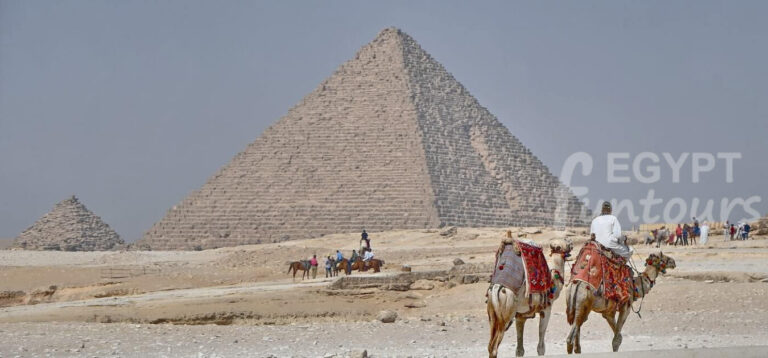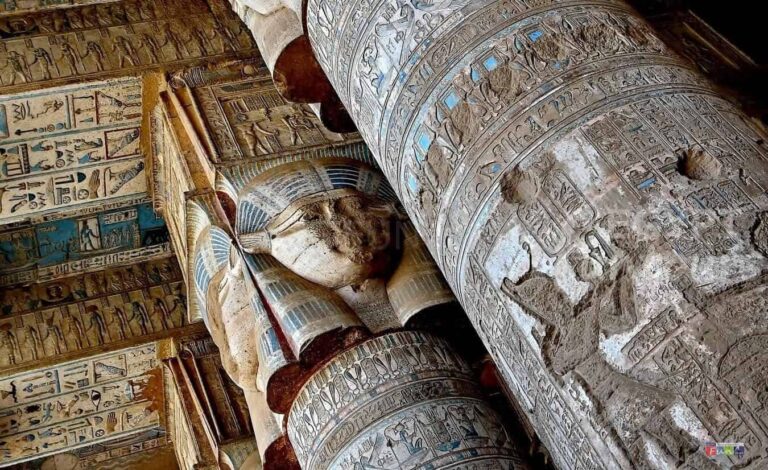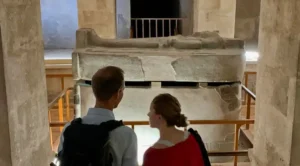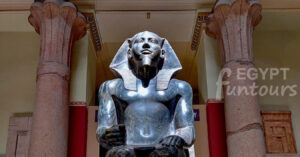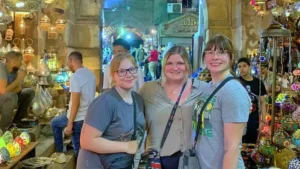God Khnum: The Egyptian Creator God
God Khnum, a ram-headed deity, was one of the most significant creator gods in ancient Egyptian mythology. His name means “the divine potter,” a title that perfectly encapsulates his primary role. Egyptians believed he fashioned both humans and other gods on his potter’s wheel from the clay of the Nile. Khnum’s domain extended beyond creation to include the crucial flow of the Nile River, making him a god of immense importance for a civilization dependent on its annual flood. This article explores his origins, his diverse roles, and his enduring legacy.
Origin and Early Worship: The Potter of the Cataracts
The worship of Khnum dates back to the Old Kingdom (c. 2686–2181 BCE). His cult was centered in Elephantine, an island at the First Cataract of the Nile. This location was highly significant. It was the place where the Nile emerged from the underworld, making it the perfect home for a creator god. As the guardian of the Nile’s source, Khnum ensured the annual inundation, which brought fertile silt to the fields and sustained life. This role earned him titles like “Lord of the Cataracts” and “Guardian of the River.”
God Khnum: Shaping Life on the Potter’s Wheel
Khnum’s most famous role was that of a creator god. Egyptian mythology tells us he created the bodies of children and their ka (life-force) on his potter’s wheel before placing them in their mother’s womb. This powerful imagery of a divine potter shaping life from clay resonated deeply with the ancient Egyptians. It represented the ultimate act of creation, linking him to the very existence of humanity. In some accounts, he even created other deities, solidifying his status as a progenitor god.
The Ram Symbolism: A God of Strength and Fertility
God Khnum was consistently depicted as a man with the head of a ram. The ram, with its curved horns, symbolized virility and fertility. This association was logical, given Khnum’s role in creating human life and his connection to the fertile Nile flood. The ram was a powerful animal in ancient Egypt, representing strength and procreative power. His ram’s head set him apart from other deities and highlighted his unique role as a life-giver.
The Divine Triads: Khnum’s Family Connections
God Khnum was often a part of various local triads, reflecting his importance in different regions. At Elephantine, he formed a triad with his consort, the goddess Satis, and their daughter, Anuket. Satis was a goddess of the Nile’s inundation, and Anuket was a goddess of the cataracts. This divine family unit protected the First Cataract and ensured the flow of the Nile. This familial structure emphasized his role as a foundational deity for the region.
The Famine Stele: A Tale of Divine Power
A famous text, the Famine Stele, highlights Khnum’s power over the Nile. The stele recounts a seven-year famine during the reign of King Djoser. The pharaoh appeals to the gods, and in a dream, he sees god Khnum, who reveals he has been holding back the Nile’s flood. Djoser vows to rebuild Khnum’s temple at Elephantine, and in return, Khnum promises to release the floodwaters. The Nile’s flood returns, and the famine ends. This tale cemented Khnum’s reputation as the ultimate controller of the river’s life-giving power.
God Khnum as a Protector and Guardian
Beyond his creative and riverine roles, Khnum also served as a powerful protector. As the guardian of the Nile’s source, he was responsible for keeping hostile forces from entering Egypt from the south. His ferocity and strength, symbolized by the ram, made him a formidable defender. Egyptians believed he protected them not only from natural disasters but also from foreign invaders and malicious spirits.
Major Cult Centers: Elephantine and Esna
Elephantine was the main center of God Khnum, with a magnificent temple dedicated to him. This temple was a place of great pilgrimage. Another important cult center was Esna, where he was associated with other creator deities. At Esna, he was known as the creator of all things, reinforcing his universal importance. The temples at these locations served as hubs for his priesthood and for the rituals honoring him.
God Khnum and Other Deities
Khnum’s role as a creator god led to his association with other deities. He was sometimes linked with Ptah, the patron god of artisans, because of their shared creative abilities. He was also connected to Ra, the sun god, as both were supreme creators. Khnum’s ability to create life from clay mirrored the sun god’s power to bring life to the world. These syncretic relationships highlight the fluidity of ancient Egyptian religion and Khnum’s fundamental importance.
The Enduring Legacy of God Khnum
The worship of Khnum eventually faded with the decline of ancient Egyptian religion, but his legacy endures. His image as the divine potter continues to fascinate scholars and artists. He symbolizes the fundamental connection between life, creation, and the Nile River. Khnum’s story provides a profound insight into how the ancient Egyptians viewed the origins of life and the divine forces that governed their existence. He remains a powerful symbol of creation and renewal.


